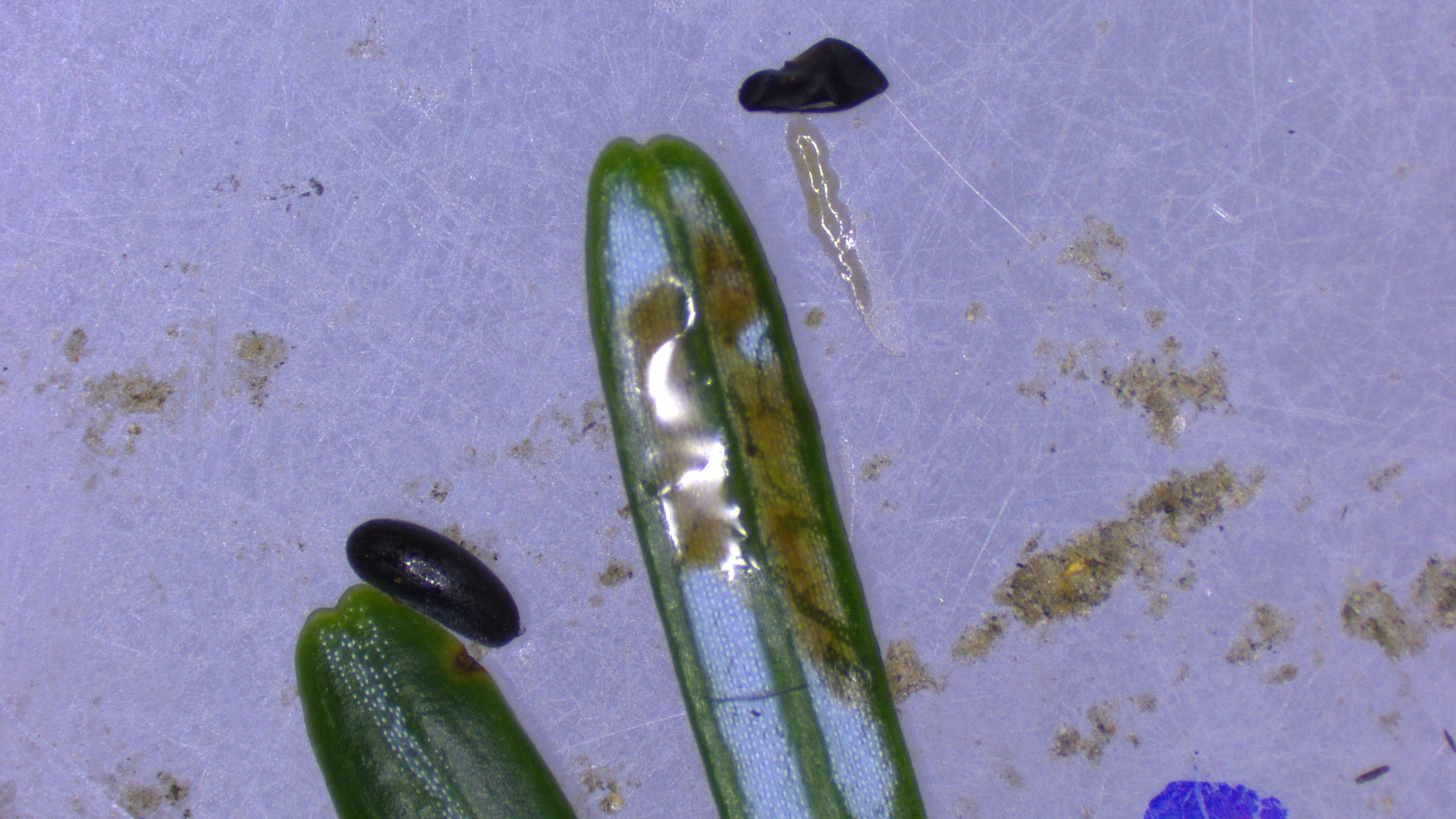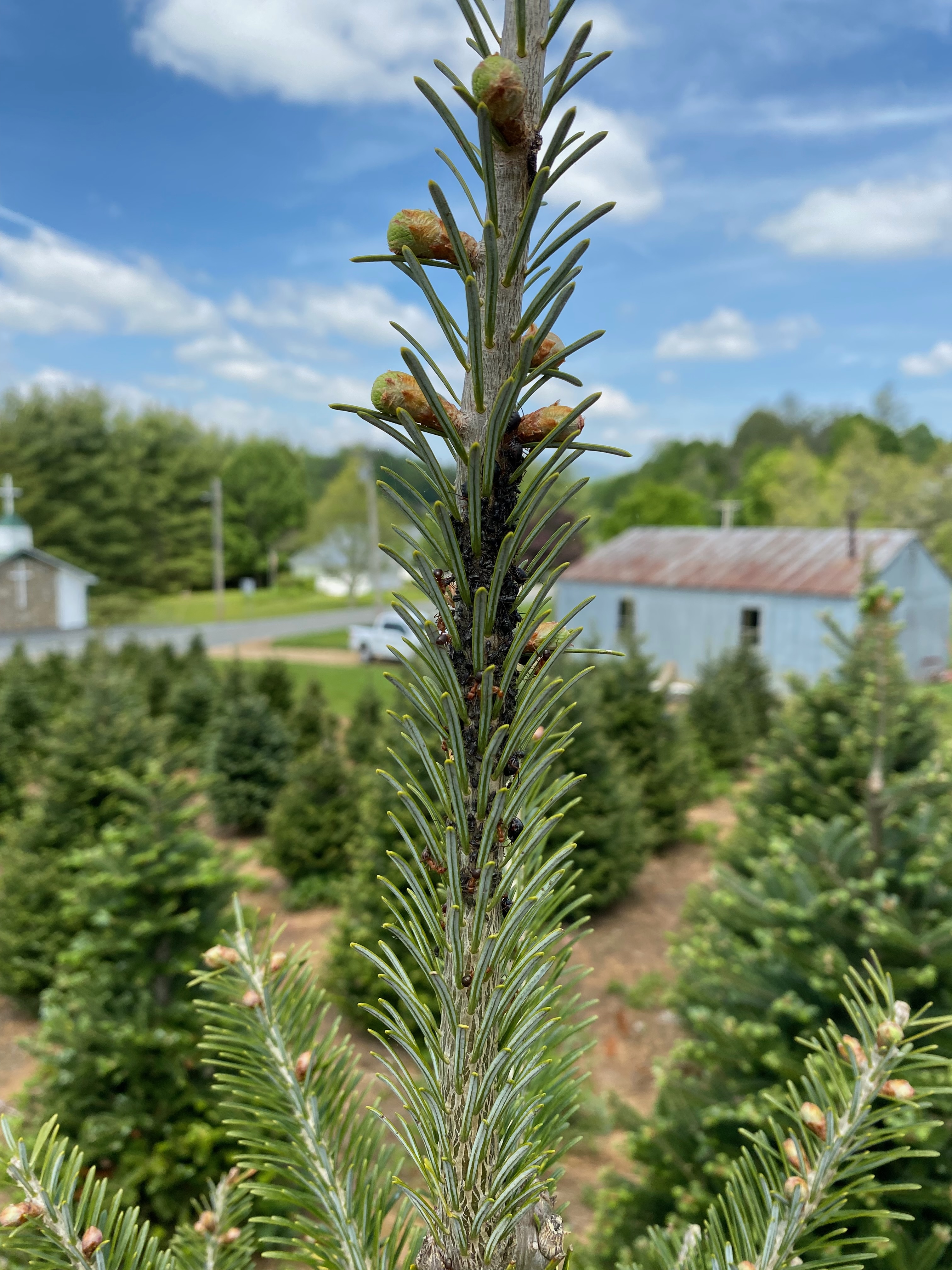Cinara Aphids and Christmas Trees
go.ncsu.edu/readext?1101543
en Español / em Português
El inglés es el idioma de control de esta página. En la medida en que haya algún conflicto entre la traducción al inglés y la traducción, el inglés prevalece.
Al hacer clic en el enlace de traducción se activa un servicio de traducción gratuito para convertir la página al español. Al igual que con cualquier traducción por Internet, la conversión no es sensible al contexto y puede que no traduzca el texto en su significado original. NC State Extension no garantiza la exactitud del texto traducido. Por favor, tenga en cuenta que algunas aplicaciones y/o servicios pueden no funcionar como se espera cuando se traducen.
Português
Inglês é o idioma de controle desta página. Na medida que haja algum conflito entre o texto original em Inglês e a tradução, o Inglês prevalece.
Ao clicar no link de tradução, um serviço gratuito de tradução será ativado para converter a página para o Português. Como em qualquer tradução pela internet, a conversão não é sensivel ao contexto e pode não ocorrer a tradução para o significado orginal. O serviço de Extensão da Carolina do Norte (NC State Extension) não garante a exatidão do texto traduzido. Por favor, observe que algumas funções ou serviços podem não funcionar como esperado após a tradução.
English
English is the controlling language of this page. To the extent there is any conflict between the English text and the translation, English controls.
Clicking on the translation link activates a free translation service to convert the page to Spanish. As with any Internet translation, the conversion is not context-sensitive and may not translate the text to its original meaning. NC State Extension does not guarantee the accuracy of the translated text. Please note that some applications and/or services may not function as expected when translated.
Collapse ▲Many of the phone calls Christmas tree farmers receive around the holiday season concern Cinara aphids. These aphids are large (among the largest aphid species in the world), dark-colored, and can be found on numerous coniferous species. A handful of native and invasive Cinara species exist in North America, and species identification can be tricky.
Cinara aphid colonies on Christmas trees produce a sticky honeydew that can reduce photosynthesis and provide a substrate for unsightly sooty mold fungi. However, these insects normally do not harm trees. They are completely harmless to humans and do not sting or bite. Cinara aphids produce live young during part of their complex life cycle. Cinara aphids can also survive subfreezing temperatures and become more active when they are moved indoors, and sometimes will produce live young while on trees brought indoors. People are understandably reluctant to encounter insects on their live Christmas trees. Therefore, identifying and removing colonies or individual Cinara aphids before a tree is sold is preferable. Dr. Sidebottom has an excellent article on Cinara aphids.
Cinara eggs are not often seen in WNC. However, we have recently noticed Cinara eggs on trees in October and November. In species such as Cinara strobi and Cinara pini, eggs are laid in the fall and hatch in the spring. Previous efforts to hatch Cinara aphid eggs on trees moved indoors have proved unsuccessful and aphid colonies can move relatively quickly from tree to tree. Therefore, these eggs serve as a reminder to check and/or treat your trees before sale to avoid Cinara adults and live young catching a ride in your cut trees.




